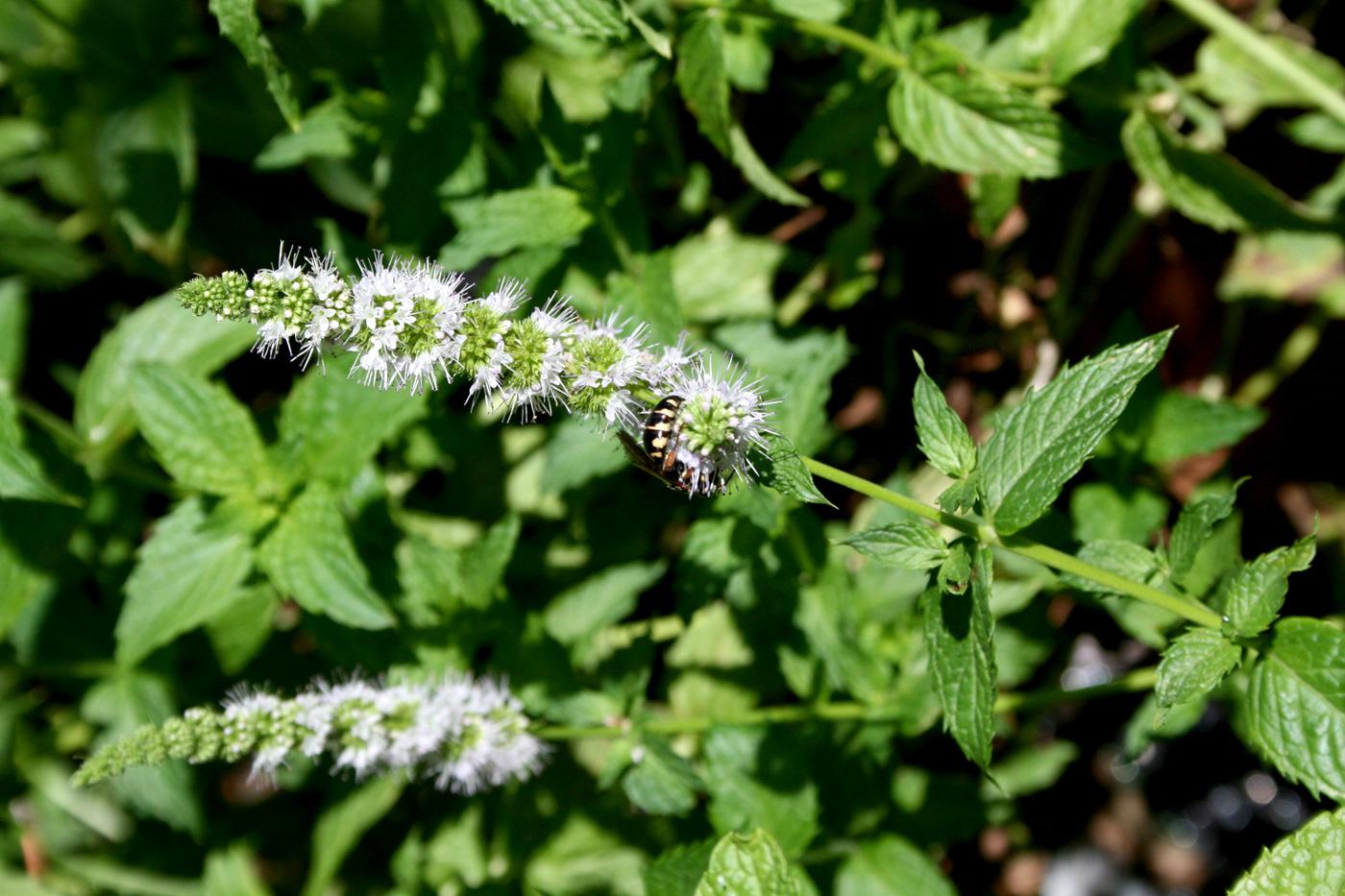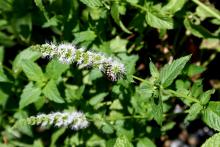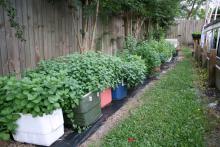Information Possibly Outdated
The information presented on this page was originally released on June 4, 2012. It may not be outdated, but please search our site for more current information. If you plan to quote or reference this information in a publication, please check with the Extension specialist or author before proceeding.
Enjoy growing mint without any trouble
Mint is one of those plants that gardeners both love and hate at the same time.
Many gardeners love the sweet fragrance they smell when they brush against the mint foliage. They also find mint iced tea to be delicious or a mint julep to be a sure-fire summer time refreshment.
But in the landscape, mint grows aggressively and can quickly take over an area. I’ve heard people say -- hopefully in jest -- that the only way to control mint in the landscape is to move.
What we call mint is actually a diverse group of plants. It seems there are hundreds of varieties the home gardener can grow. Peppermint and spearmint are perhaps the best known, with their familiar fragrances.
Other varieties expand the olfactory mint experience. Ginger mint, apple mint and orange mint all are appropriately named. The mention of chocolate mint brings mint chocolate candies to mind, but to me, the name more accurately describes the contrast of the chocolate brown stems to the bright green foliage.
The smell and taste of mint are well known, but many people don’t notice these plants have flowers, too. Flowers are produced in spikes that are magnets for various kinds of pollinators, especially bumblebees and wasps. Most herbs taste best before the flowers form, but mint tastes and smells best after the flowers have formed.
Most of the mints I’ve mentioned are commonly found in garden centers, especially in spring and early summer. But mint is really easy to propagate if you have a friend growing the variety of mint you want to grow.
Divide a plant to have many smaller plants to share. Mint produces stems that scramble across the ground, forming roots wherever the stem touches the ground. Snip off some of these sections with roots, and they will readily grow into new plants. Another way to start a plant is to take a cutting and place it in a glass of water. Roots should form in a couple of weeks.
Despite the jokes about mint’s proliferation, controlling its growth is not an impossible mission. The key is to establish boundaries.
An easy way to do this is to plant mint in a tall, bottomless container. Dig the planting hole and place the bottomless container in the hole, leaving a few inches above ground. Fill the container with good, amended soil and plant the mint. The bottomless container will provide a physical barrier that prevents the spread of the root system.
I’ve come up with a unique solution to controlling mint and recycling at the same time.
In the summer months, it’s common to see coolers beside the road that have fallen off pickups and out of boats. I stop and pick these coolers up. When filled with good potting mix, the mint grows well, and the roots cannot escape. Be sure the drain plug is open so the plants are not over-watered. If the cooler doesn’t have a drain plug, simply drill some drain holes in the bottom.
Wherever you grow mint, be sure to try some so you can enjoy the smell outdoors and the taste indoors.









